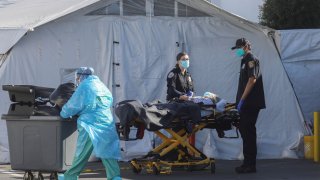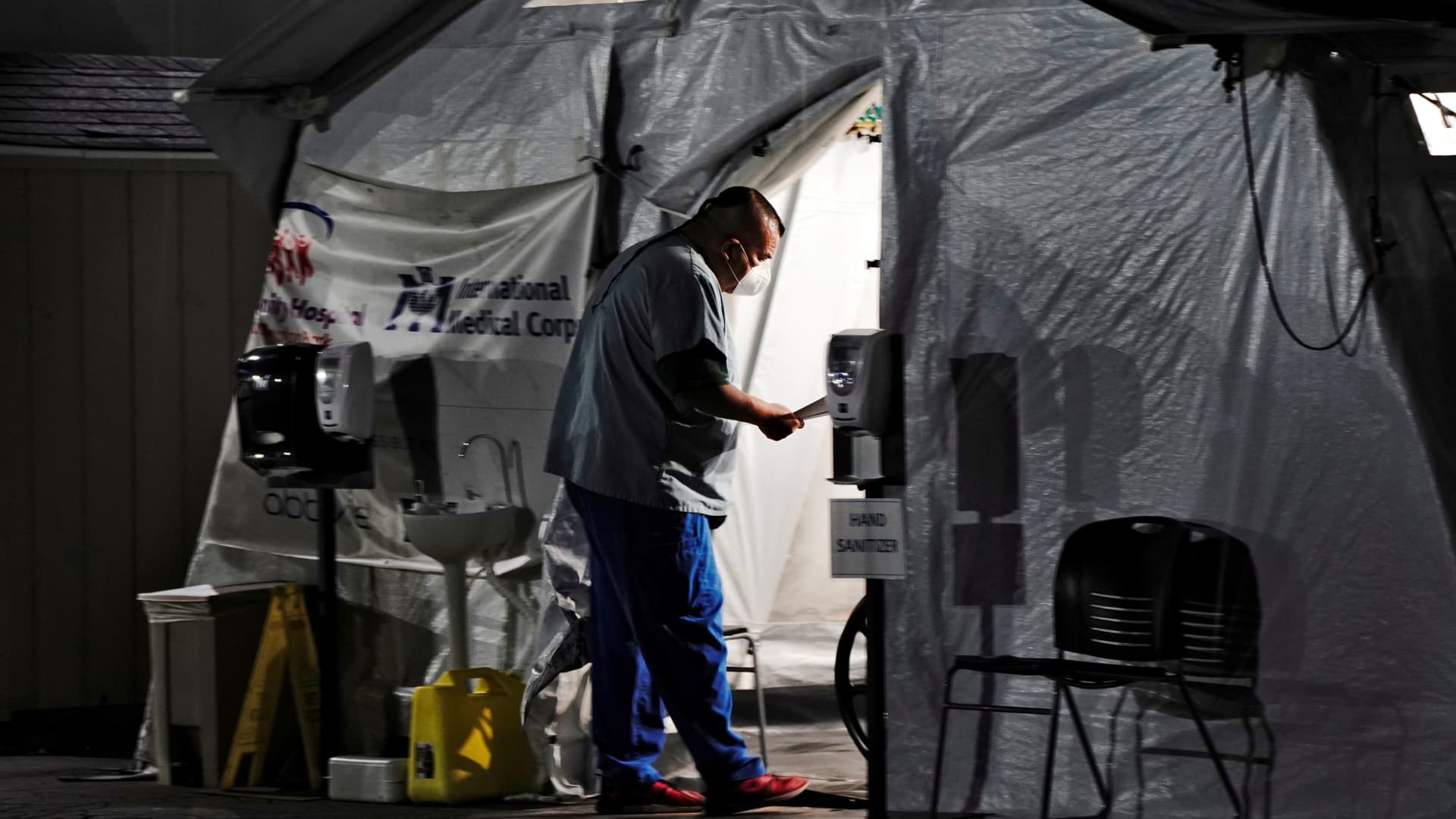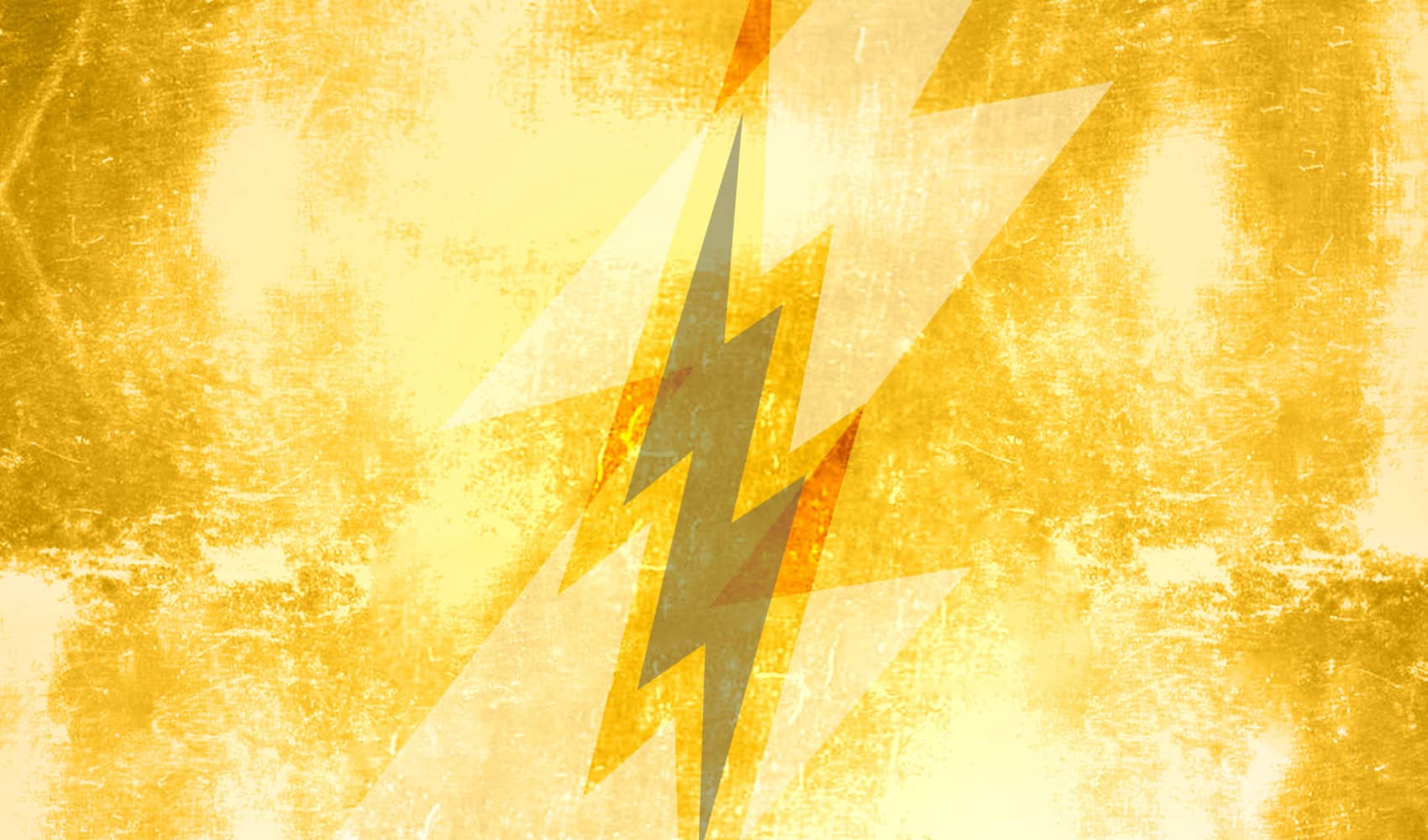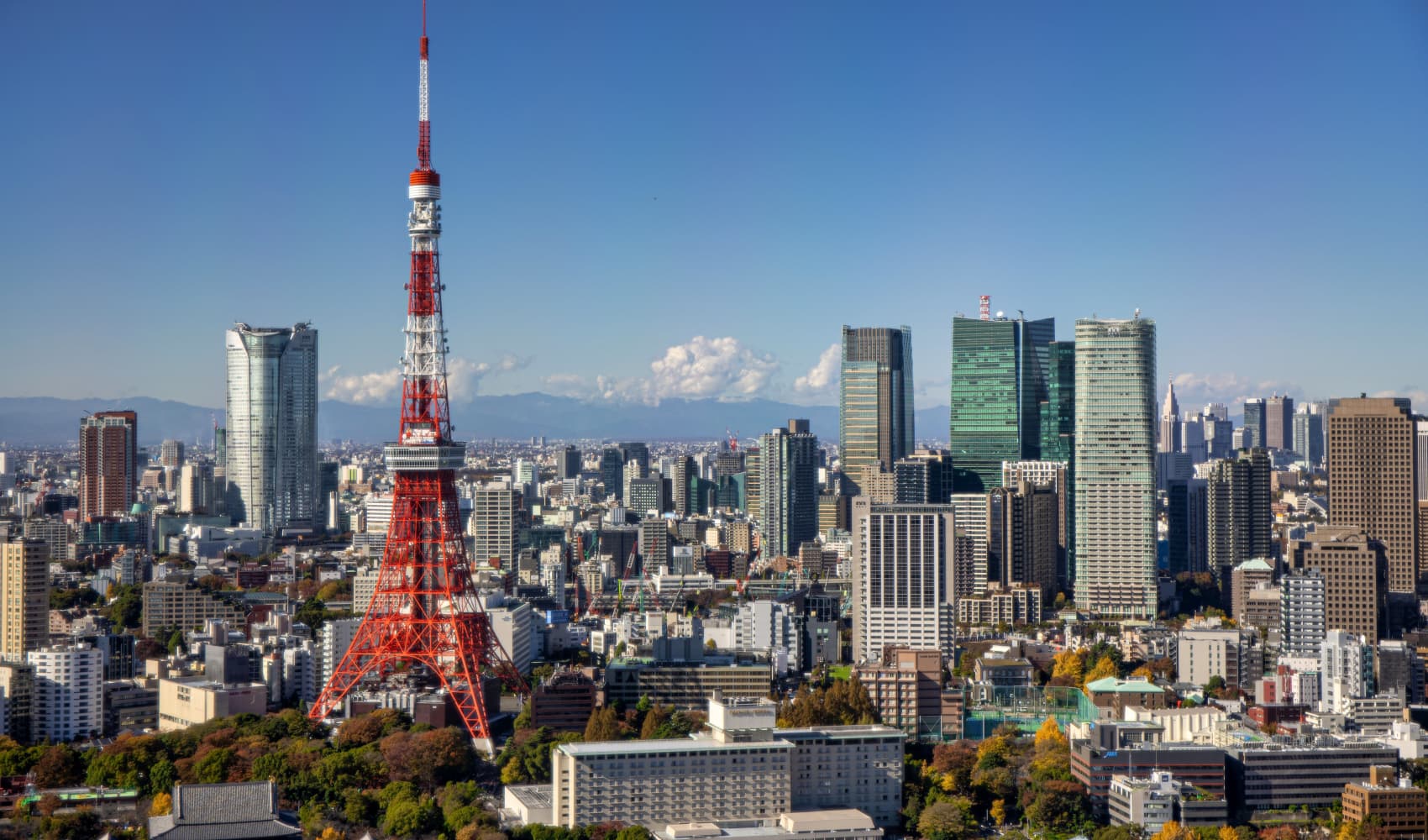
- In Los Angeles County, the coronavirus kills someone every 15 minutes on average, Public Health Director Barbara Ferrer said.
- One in five people who are tested for Covid-19 in the county are positive for the virus.
- Hospital beds are being crammed into gift shops, cafeterias and conference rooms as hospitals struggle to find any available space for patients.
The Covid-19 outbreak is so bad in Los Angeles County, ambulances have to wait hours to drop patients at emergency rooms.
Hospital beds are being crammed into gift shops, cafeterias and conference rooms as hospitals struggle to find any available space for patients.
The Los Angeles County Emergency Medical Services Agency told EMS employees Monday to only administer supplemental oxygen if a patient's saturation levels dip below 90% to conserve depleting oxygen supplies. Paramedics were also told not to transport adult heart attack patients to the hospital unless they can restore "spontaneous circulation" on site — to focus care on patients who are more likely to survive.
Los Angeles is facing an unprecedented surge in coronavirus patients that is pushing area hospitals to the brink. Public health officials warn the already dire situation is projected to worsen in January.
"Many hospitals have reached a point of crisis and are having to make very tough decisions about patient care," Dr. Christina Ghaly, the county's director of health services, said at a press briefing Monday. She urged residents to avoid the emergency room unless they're in need of serious medical attention.
Hospitals have been stretched to their limits since December when the region's intensive care unit capacity rapidly dropped to zero, according to state health officials. Over 8,000 people are now hospitalized with the virus in the county, and 20% of those people are in intensive care units, data compiled by the county's public health department shows. With the virus circulating widely, public health officials are warning that conditions will likely deteriorate before they improve.

Across California, roughly 370 people die from Covid-19 every day, based on a weekly average — a near 46% increase compared with a week ago, according to a CNBC analysis of data compiled by Johns Hopkins University.
Money Report
In Los Angeles County, the coronavirus kills someone every 15 minutes on average, the county's Public Health Director Barbara Ferrer said during the briefing on Monday. The county surpassed 11,000 total Covid-19 deaths on Tuesday, with 1,000 of those coming in less than a week, the public health department said in a statement.
Everyone in the area should assume that they'll be exposed to the disease whenever they leave their house, Ferrer said. One in five people who are tested for Covid-19 in Los Angeles County have the virus.
"We're likely to experience the worst conditions in January that we've faced the entire pandemic, and that's hard to imagine," Ferrer said. "The increases in cases are likely to continue for weeks to come as a result of holiday and New Year's Eve parties and returning travelers."
Staff stretched thin
Los Angeles County is still dealing with the flood of Covid-19 spurred from the Thanksgiving holiday and have yet to see the cases that will likely follow the late-December holidays, Ghaly said. Hospitals are now trying to do "everything they can to prepare."
Some coronavirus patients are forced to wait more than a day before an intensive care unit bed opens up for them, Dr. Brad Spellberg, the chief medical officer at the Los Angeles County-University of Southern California Medical Center, told CNBC in an email.

The hospital has had to redeploy some of its health-care workers to treat the influx of ICU patients, which means there's no time to conduct elective surgeries or other lifesaving procedures, such as colonoscopies, Spellberg said.
Gov. Gavin Newsom said during a press briefing on Monday that the state has sent medical assistance teams to the Los Angeles area to help reduce the stress on hospitals. However, if there's another surge of Covid-19 cases following the December holidays, the additional staff won't be enough, Spellberg said.
"Our staff are still stretched thin, particularly in the ICU. One cannot just create more ICU nurses and doctors," Spellberg said in an email, asking people to continue following public health guidance such as mask wearing, physical distancing and avoiding crowds.
'We're being crushed'
The surge comes as California and other states across the U.S. have started to administer their initial shots of Covid-19 vaccines from Pfizer and Moderna.
The state has received just over 2 million doses of vaccines, but only 24% of them have been administered, according to the state's department of public health database last updated on Wednesday. Newsom said on Monday that the process is moving too slow and the state "wants to see things go much faster."
Ravina Kullar, a Los Angeles-based infectious disease expert and a member of the Infectious Diseases Society of America, told CNBC in a phone interview that she expects inoculations will accelerate in the coming weeks, though the shots won't immediately work. It takes a few weeks for immunity to build, and too few are being given to develop herd immunity that would protect the broader population.
"I think we will see some kind of stability, plateauing out and decrease in cases, but it's just going to take time," Kullar said. "I think it's going to take until the springtime, the summertime to really see an impact there."
Kullar, who works in long-term care facilities and nursing homes in Los Angeles, said every facility she works with is battling a Covid-19 outbreak. Those residents, alongside health-care workers, are first in line to receive vaccine shots in California as they're rolled out, Newsom said, adding that there are about 3 million people in the state's first vaccination phase.
"We're being crushed," Kullar said. "We're very short staffed. I'm exhausted, my colleagues are exhausted. It's a very tough situation out here."
— The Associated Press contributed to this report.






